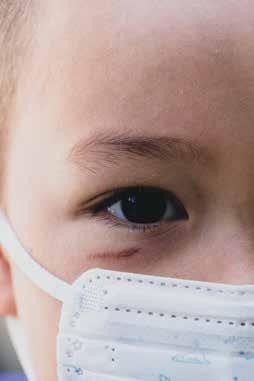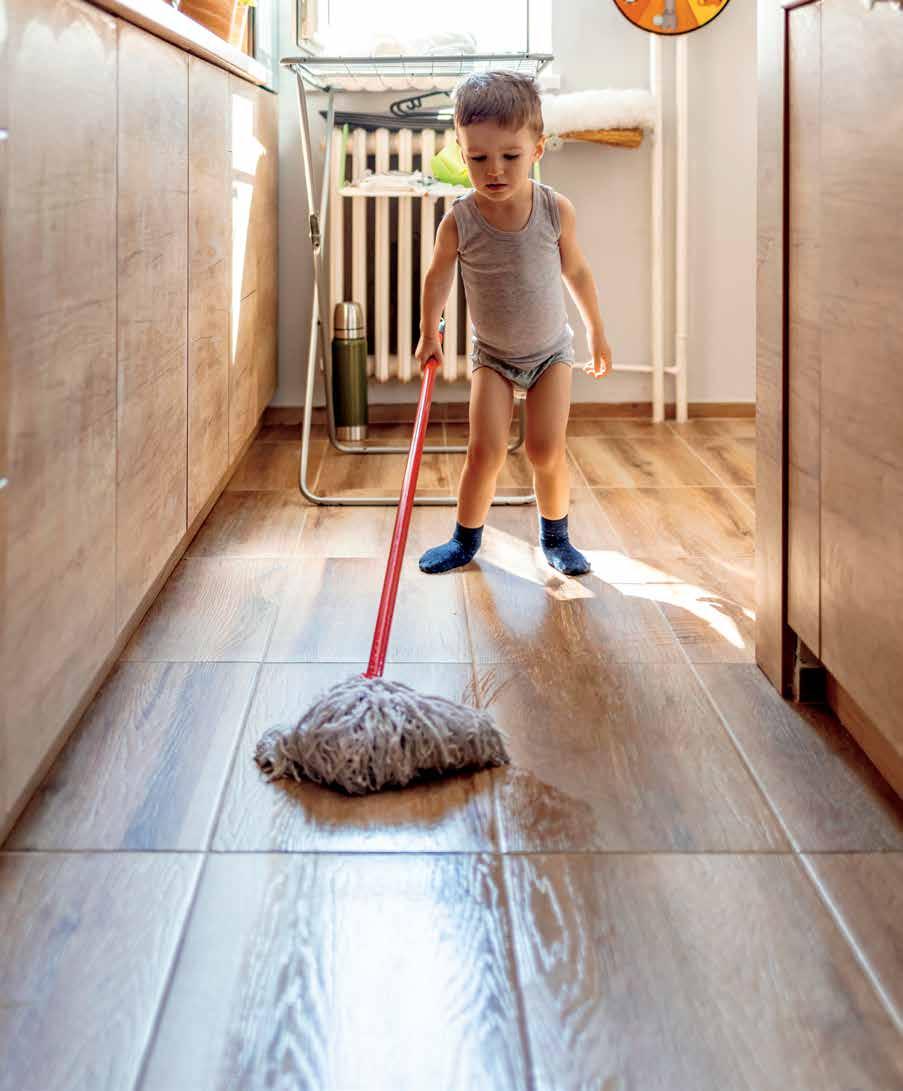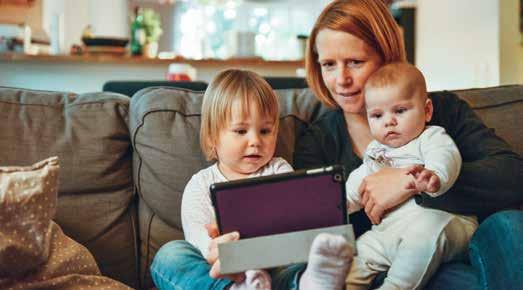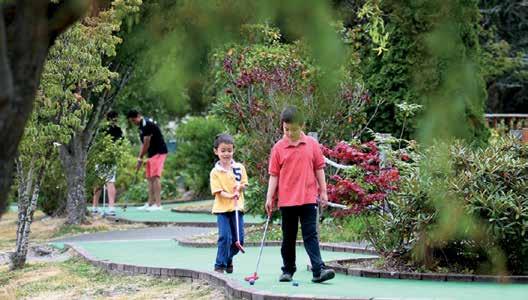
3 minute read
Learning Fun on the Cheap
10 DIY Recycled Toys for Crafty Kids
Creative toys that are affordable, green and oh so fun!
By Tiffany Doerr Guerzon
All parents whose child has pushed an expensive toy aside to play with the box it came in know that children often enjoy simple toys the most. Many playthings can be easily made at home with inexpensive and even recycled materials. We’ve rounded up 10 DIY toys that even the least crafty parent can create. Paint flat rocks in rainbow colors to make a stacking toy, create make-believe cake slices with sponges and glitter, or build your own sensory board!
Cardboard beads for threading • theimaginationtree.com Oversize beads and pipe cleaners make a great threading activity for little hands. Create cardboard beads from cut-up paper towel or toilet paper tubes, as detailed on The Imagination Tree. Decorate the beads with paint, duct tape or patterned paper, or turn the kids loose with markers and stickers.
Felt vegetable garden • adventures-in-making.com The Adventures in Making blog offers sweet
instructions for making an adorable felt vegetable garden. The planter box is filled with “dirt” made of brown felt bolsters, in between which the veggies can be tucked in or “planted.” Make colorful felt veggies following the free downloadable pattern to complete your child’s colorful garden.
Pretend sponge cake • thecrafttrain.com Once the kids have played with their vegetables, it’s time for cake! Perfect for playing bakery or tea party, kids can help create layered cakes with felt, glitter, pompoms and colorful sponges. Pop on over to The Craft Train blog to snag free templates.
DIY sensory board • funathomewithkids.com Take a trip to the hardware store for MDF (medium-density fiberboard) and a variety of household items for babies to manipulate and you will have all of the ingredients you need for a sensory board. Babies and toddlers will love feeling the carpet swatch, turning a light switch on and off, and looking in a mirror. Mount the board on a wall at the perfect height for a sitting baby; find all the details on Fun at Home With Kids.
Chalkboard wood blocks • hellobee.com Create an adorable cityscape using just one 2-by-4 piece of lumber. The author of the Hellobee blog had the wood cut into various shapes, and then sanded the blocks and painted them with chalkboard paint. Kids can draw their own details on the blocks, erase them and then draw new ones the next day.
Fishing toy • tidbits-cami.com You’ll need only basic sewing skills to make fabric fish with a magnet inside. The Tidbits blog will show you how to create this toy, even walking you through how to make the wooden reel. Your little fisher will be amused for hours!

Rainbow stacking stones • cbc.ca/parents If your kids love to collect rocks, put those stones to good use by creating a stacking and balancing game like the one detailed on CBC Parents. Paint your stackers with rainbow hues or alternating colors to add pattern recognition to this learning toy.
Water-bottle bowling pins • canadianfamily.ca This super-simple craft from Canadian Family makes use of water bottles that would otherwise be discarded or recycled. Kids can help a parent shake the paint inside the bottles (once the cap is on tight). The pins are lightweight, perfect for indoor bowling with a soft ball.
Tactile tugging toy • theimaginationtree.com Any empty, lidded canister will work to create this fun toy project from The Imagination Tree. Babies and toddlers will enjoy pulling the ribbons back and forth through the slots. Using ribbons with various textures makes this toy a tactile experience.
DIY portable dino play mat • fivekindsofhappy.com Amy, author of the Five Kinds of Happy blog, came up with a great portable toy. She used a sewing machine to make the mat, but you can make this project “no sew” by using fabric glue or fusible webbing. Your kids then add their own dino toys and other items from nature to the playscape. ■ Tiffany Doerr Guerzon is a freelance writer, the mother of three children and author of “Save Money on Groceries by Going Back to Basics.”






